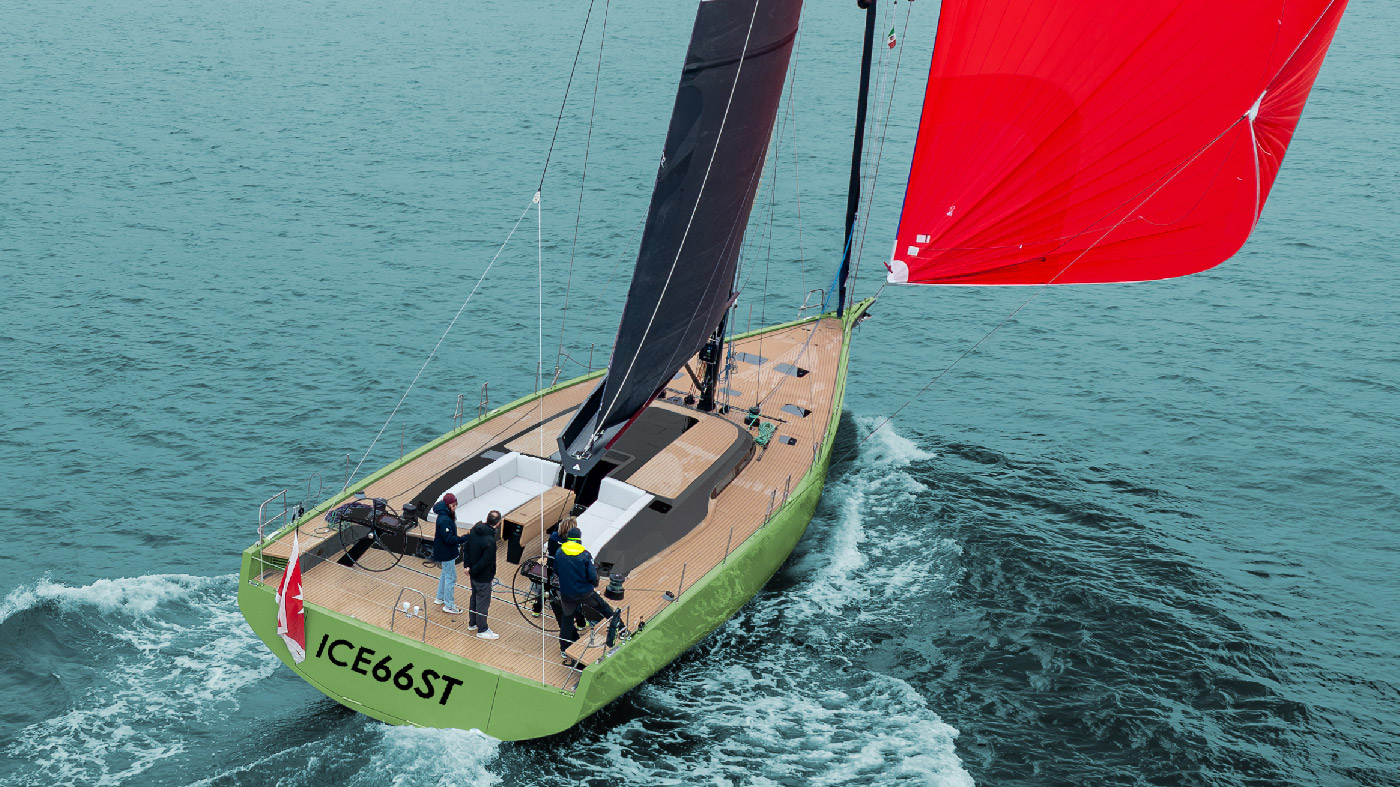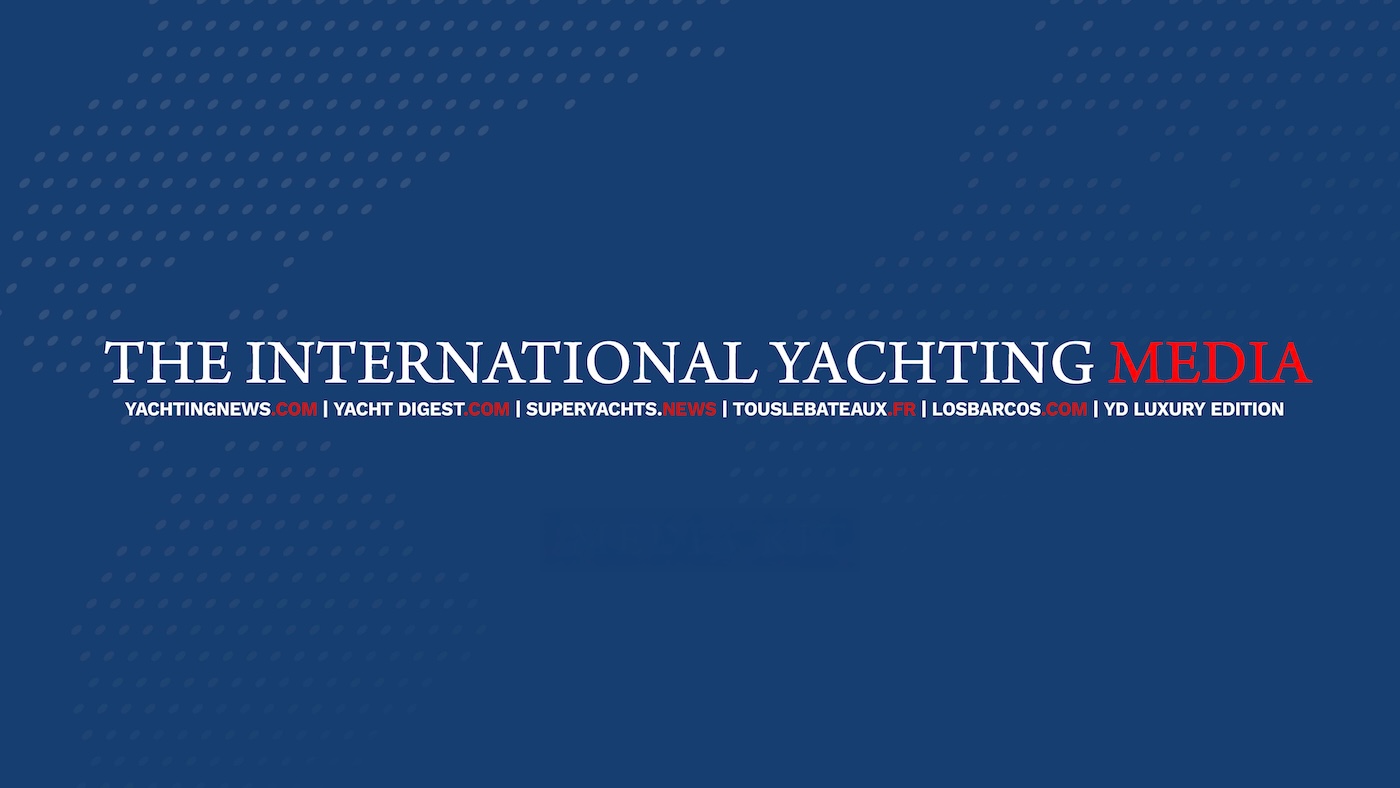When the first encounter with a stranger takes place in an ideal context, the first good impression will probably affect the rest. Well, when we met her for the first time, she was rocking in the still waters of the Miami River, in the heart of Down Town, during a party dedicated to Jeanneau owners. It was her first outing and a wonderful play of lights duelling with the skyscrapers’ ones in the background illuminated her elegant figure.
 We’re talking about the latest creation of the French Jeanneau shipyard, the Jeanneau 51, presented for the first time to the American audience at the Miami Boat Show last February. But our close encounter with her took place in Cannes last month, when we seized the opportunity to test her. Perfectly aware of her appeal and mindful of our first encounter in Miami, we got the quay with the most analytic of intentions, trying to forget our first impressions. However, the latter were confirmed precisely by our detailed analysis.
We’re talking about the latest creation of the French Jeanneau shipyard, the Jeanneau 51, presented for the first time to the American audience at the Miami Boat Show last February. But our close encounter with her took place in Cannes last month, when we seized the opportunity to test her. Perfectly aware of her appeal and mindful of our first encounter in Miami, we got the quay with the most analytic of intentions, trying to forget our first impressions. However, the latter were confirmed precisely by our detailed analysis.
The boat
This new model was designed by naval architect Philippe Briand, a name indissolubly linked to that of the French shipyard, and designer Adrew Winch.
Inspired by the Jeanneau 54, the new 51-footer is a clear expression of the willingness to innovate that the shipyard has given to the new Jeanneau Yachts line. This trend to improve design features along with the use of innovative materials and new comfort solutions immediately stands out when the visitor reaches the cockpit and takes a look to rigging, stern structure and space arrangement.
Little less than 15 mt long and 4.69 mt wide, the boat replaces the old Sun Odyssey 519 in terms of size. But similarities don’t go beyond. The new 51-footer is in fact the expression of a completely different definition of cruise, where the space intended to accommodate guests, from the drop-down swimming platform aft to the chaise-longue placed on the side of the entrance, suggests a performing view of sailing. This is evident in the cockpit, too, where the space for the helmsman is wide and well-equipped so that he can steer the boat easily and autonomously.
The hull was hand-laminated with polyester resins while the deck was injection moulded using the innovative Prima Process, an innovative moulding process where resin is injected into the vacuum space created by the two parts of the mould. Injection moulding process was introduced by Jeanneau many years ago to built its decks and now, in the case of the new Jeanneau 51, it reduces weight by 30% without compromising mechanic resistance.
Deck
Let’s start our deck tour from the stern, one among the best equipped ones we’ve never seen on boats belonging to this specific market range.
The whole transom has an hinged opening and hosts two lateral sun pads within a unique equipped space. While sailing, the transom lifts and closes up defining the limit of the large space (about 1 mt wide) for the helmsman. On the two quarters, two seats can be folded in order to create a unencumbered surface where rigging can be reached easily. On the stern and the starboard side, a popup davit is equipped with two telescopic brackets to launch the tender.

In the middle of the cockpit, a large table with retractable sides hides a life raft in an easy-to-reach closed compartment.
The stern-to-bow passage is unencumbered, large and comfortable since the chain plates are cleverly fixed to the sides and the jib traveler runs just outside the deckhouse. Before the mast there’s the self-tacking jib or, as an alternative, a furling one. The standard mainsail, too, features a furling system.
Interiors
Finishes, materials, space arrangement, stowage volumes: everything leads the viewer to appreciate the consistence and harmonious communication between the stylistic effort of Philippe Briand, who designed both the hull and deck, and that of Andrew Winch, who designed interiors. The choices of the naval architect applied on the deck spaces along with the mechanical and design solutions intended to provide passengers with the greatest comfort are reflected in the contribution of the interior designer, who finally managed to find the ideal ergonomic dimension.
Interior layout is rather traditional and envisages three possible alternatives: three double cabins with three bathrooms, two double cabins and a single one, two double cabins with two bathrooms. The model we tested has a fore owner’s cabin and two cabins in the stern, with that on the starboard side lightly smaller than the other one. The second aft bathroom has been even converted into a laundry equipped with a washing machine and a small cabinet for raincoats.
There’s enough room everywhere: environments are all comfortable, sufficiently high and flooded with natural light. More specifically, the galley features a unique bearing surface (1.60 x 70 cm) while the chart table is large enough to place an open navigational chart.
Traditional design shapes the dinette, furnished with a sofa on the left and a U-shaped one on the starboard side counterposed to the dinner table.
The fore owner’s cabin deserves a special mention, not only because of it spaciousness and the bed’s size ( 2.00 x 1.60 mt) but also thanks to its huge stowage volumes which include four low wardrobes, 8 lockers and two bed drawers.

As for construction materials, the perfect combination of teak, oak tree, practical elegant upholstery suggests solidity without overloading design.
Sea trial
Our sea trial enables us to justify one of the statements mentioned above, namely the concrete achievement of an excellent compromise between sailing performances and on-board comfort. We tested the boat in a 12-knot breeze that – unfortunately -immediately weakened after few minutes. So, in a 6-knot wind, the hull designed by Briand sailed at about 5 knots (with 60-degree true wind).
The wheel is extremely responsive, which is not obvious with such a light breeze. Hauling up on the wind is not only possible but even easily reachable with just a half knot more.
With code 1, in a 5-knot true wind and a 80-degree true angle, speed was equal to the wind’s one.
Thanks to the particular mainsail sheet system, we managed to adjust the mainsail and the jib autonomously, putting the fore sail sheet on the leeward winch and the mainsail’s one on the opposite winch.
Under power (the boat was powered by a three-blade Yanmar R 110), the Jeanneau 51 reached a top speed of 9.5 knots at 3,200 rpm and a cruising speed of 8.4 knots.
Under-Power Performances
| rpm | Speed (knots) |
|
| 1,000 | 3.4 | |
| 1,500 | 5.0 | |
| 2,000 | 7.0 | |
| 2,300 | 8.0 | |
| 2,600 | 8.4 | Cruising speed |
| 3,200 | 9.4 | Top speed |
Performances registered with a Yanmar 80 hp engine with three-blade propeller. The sea trial was experienced in flat sea and 5-knot beam wind.
Sailing performances
| True wind degrees | Speed (knots) |
| 45 | 4.5 |
| 60 | 5.1 |
| 90 | 4.4 |
| 120 | 3.7 |
Performances registered in a 6-knoe wind, flat sea, 110% mainsail and jib. 8 passengers boarded. Water tank: 50%. Fuel Tank: 35 %
Specifications
| Length Overall | 15.38 mt |
| Length Waterline | 13.95 mt |
| Max Beam | 4.70 mt |
| Draft | 2.28 mt |
| Displacement | 14,400 kg |
| Ballast | 4,300 kg |
| Water Tank Capacity | 640 l |
| Fuel Tank Capacity | 480 l |
| Motorizations | 80 hp |
| Mainsail | 52.2 m2 |
| genoa | 55.9 m2 |
| Code 0 | 100 m2 |
| Concept | Philippe Briand |
| Interior design | Winch Design |
| CE Category | A |




























